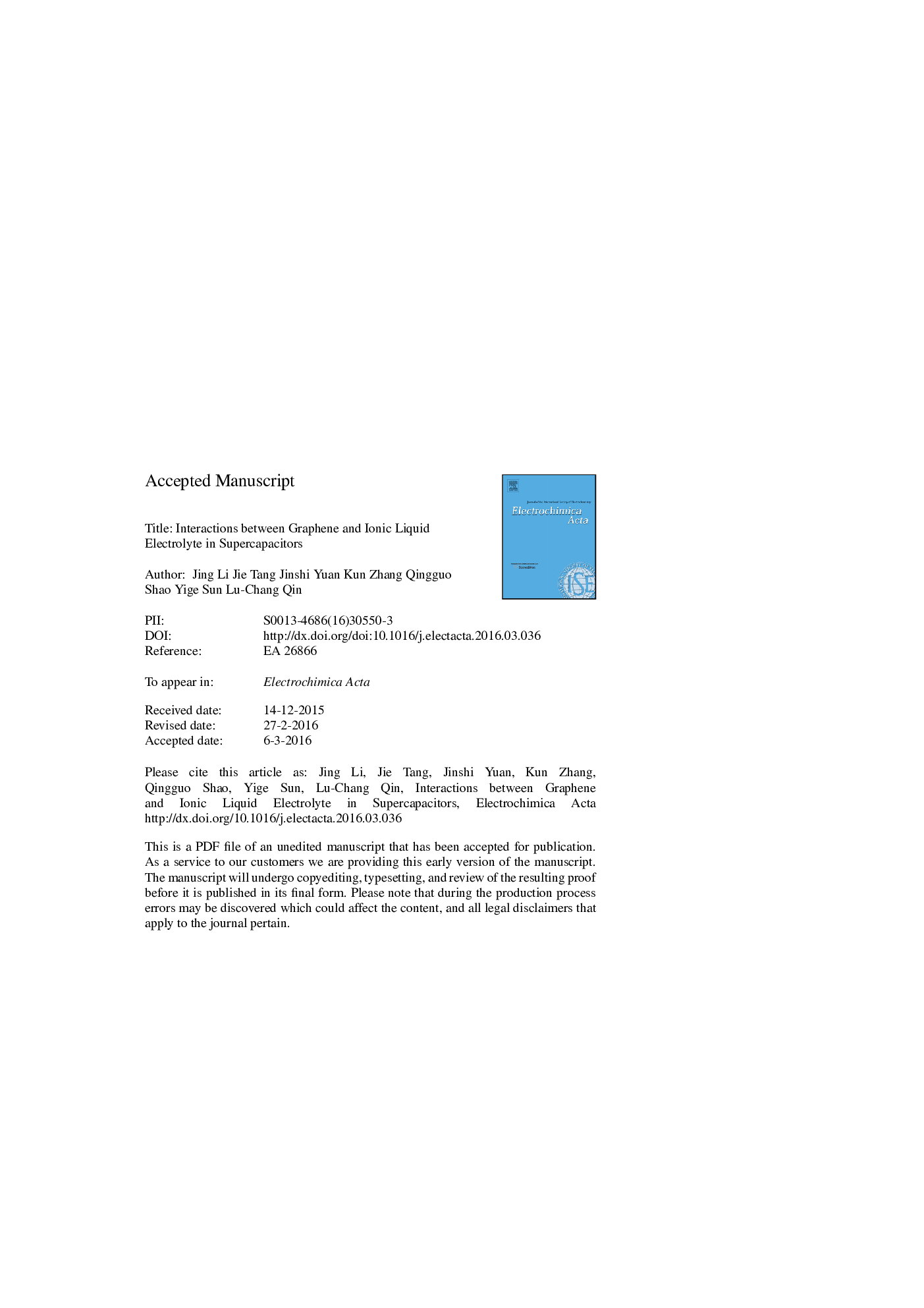| Article ID | Journal | Published Year | Pages | File Type |
|---|---|---|---|---|
| 6608017 | Electrochimica Acta | 2016 | 23 Pages |
Abstract
The graphene material prepared by the chemical reduction method usually has oxygenic functional groups in it and such functional groups often result in interactions between the graphene electrode and the electrolyte in supercapacitors. We have examined the existential form of interactions between graphene as the electrode and three kinds of ionic liquid, 1-ethyl-3-methylimidazolium bis (trifluoromethylsulfonyl) imide (EMI-TFSI), 1-ethyl-3-methylimidazolium tetrafluoroborate (EMI-BF4), and 1-methyl-1-propylpiperidinium bis (trifluoromethyl sulfonyl) imide (MPPp-TFSI), as the electrolyte of a supercapacitor. Mass spectroscopy (MS) and Fourier transform infrared spectroscopy (FT-IR) analyses confirmed that the residual hydroxyl groups in graphene were transferred to EMI+ and TFSIâ lost oxygen atoms to graphene, while little reaction took place in BF4â or MPPp+, during the process of charging. The chemical reactions are suggested to contribute to the device capacitance while it is also one of the reasons for the decreased electrochemical stability window. In this study the highest energy density achieved using the graphene electrode is 169 Wh kgâ1 in MPPp-TFSI electrolyte charged to 4.4Â V.
Keywords
Related Topics
Physical Sciences and Engineering
Chemical Engineering
Chemical Engineering (General)
Authors
Jing Li, Jie Tang, Jinshi Yuan, Kun Zhang, Qingguo Shao, Yige Sun, Lu-Chang Qin,
